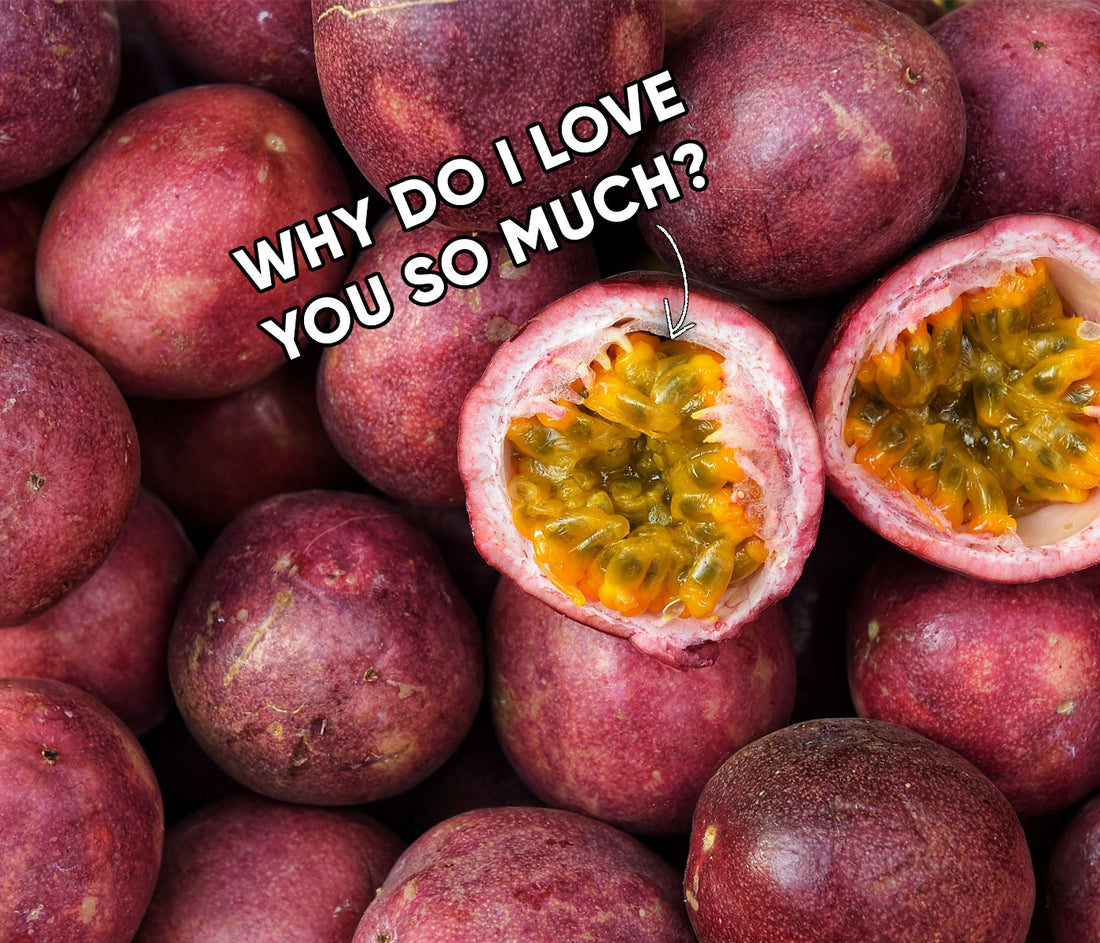Everything you need to know about this super-fruit
Passion fruit is often touted as an excellent addition to your diet, but you’re probably wondering what it is, what it tastes like, and what specific benefits it offers.
If that's the case, continue reading as we've simplified it for you below.
What is Passion Fruit?
Passion fruit is a small tropical fruit that is rich in all sorts of vitamins, minerals, fiber, and antioxidants.
The fruit comes from subtropical South America, but can survive in various climates and is now grown in Australia, Asia, Europe, and North and South America.
It has tough outer skin you can cut through with a knife to get to the soft and juicy center that’s full of tasty seeds.
It is most commonly has a purple skin or yellow skin color. The purple variety is typically oval and relatively small (about 1.5 to 1.75 inches in diameter) and weighs only 1.2 ounces.
In contrast, yellow passion fruit skin is about twice as large and weighs up to 2.8 ounces. Its skin is smooth with a leathery texture.
What Does Passion Fruit Taste Like?
The taste can best be described as a combination of mild sweetness with tart undertones. Fresh passion fruit has a predominantly sour taste, gradually shifting to sweet as the fruit ripens.
The blend of sweet and sour makes passion fruit an interesting snack. You'll taste a hint of citrus, as well as melon, kiwi, or pineapple.
Passion Fruit Benefits
1. Nutrient-Rich
Passion fruit is a good source of nutrients your body needs to function at its best and maintain strong immune system function: vitamins A and C, iron, fiber and potassium.
It also provides dietary fiber, which is necessary for gut health, satiety between meals, and healthy bowel movements.
2. Full of Antioxidants
Aside from the nutrients mentioned above, passion fruit is rich in antioxidants called polyphenols and carotenoids (vitamin C also has antioxidant functions).
These plant compounds protect healthy cells from oxidative stress that results from reactive oxygen species (ROS). If left untreated, ROS can lead to too much damage, promote inflammation, speed up aging, and increase the risk of various diseases.
3. Low Glycemic Index (GI)
Glycemic index measures a food’s impact on blood sugar levels. A high GI food leads to a quicker and more noticeable increase in blood glucose, which also increases the risk of a subsequent crash.
Passion fruit has a GI of 30, which is classified as low. This means the fruit doesn’t increase blood sugar levels as much. Instead, it provides a steadier increase in blood glucose, leading to stabler energy levels, mood, and appetite.
How to Make Passion Fruit Cubes
Passion fruit puree or passion fruit pulp is easy to make for frozen cubes and is perfect for fruit smoothies, oatmeal, desserts, and even cocktails.
Here’s how to make it:
- Open the passion fruit by cutting it in half, scoop out the pulp inside, and put it into a strainer.
- Push the passion fruit through the strainer and into a jar. Utilize a spoon for simplicity.
- Pour puree into an ice cube tray and free for a few hours.
- Otherwise, you can opt for our Passion Fruit Bite-Sized Pieces for a more convenient option, haha!
Conclusion
In summary, passion fruit stands out not only for its exotic and vibrant taste but also for its impressive health benefits. Whether incorporated into delightful recipes or enjoyed on its own, this versatile fruit adds a nutritional punch to your diet, making it a delicious and smart choice for health-conscious food enthusiasts. Check out our passion fruit recipes for inspiration and enjoy this amazing fruit.



